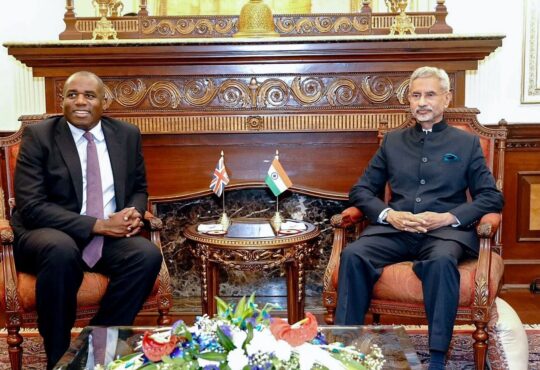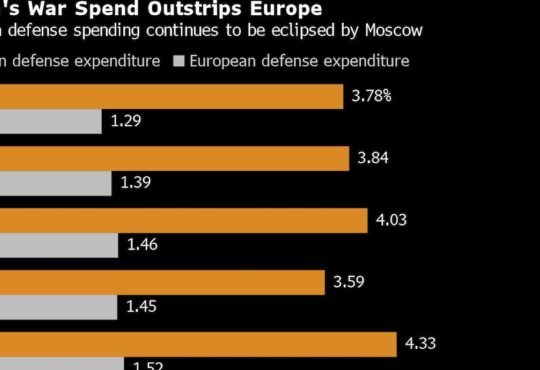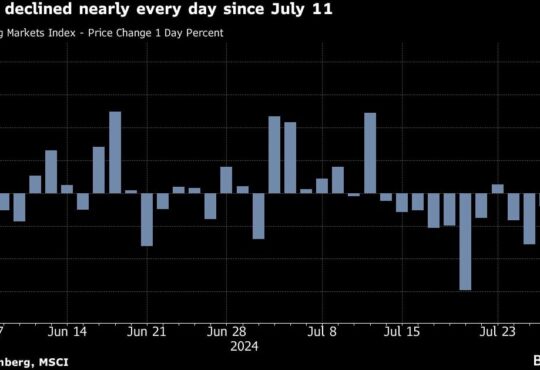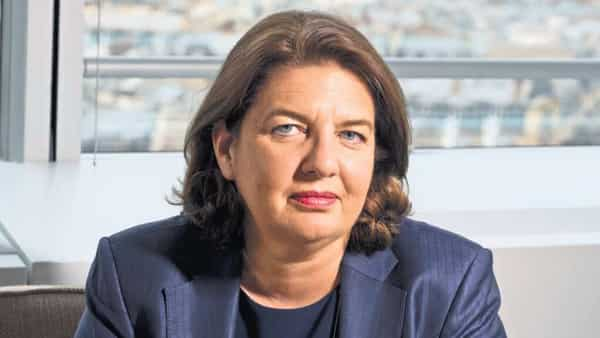
What is the split of your assets between Europe and Asia?
Out of the €2 trillion assets that we manage today, close to €400 billion is in Asia. We have a bit more than €100 billion in the US and the rest is in Europe. We have a strong diversified client base with more than 100 million retail clients. We work with roughly 600 distributors and banks all over the world. But we also have a very strong institutional client base with 1,500 clients. We can cover simple client needs in 35 countries, on the one hand, and on the other, work with the largest institutions in the world, big pension firms, big sovereign firms, and we have a lot of them in Asia
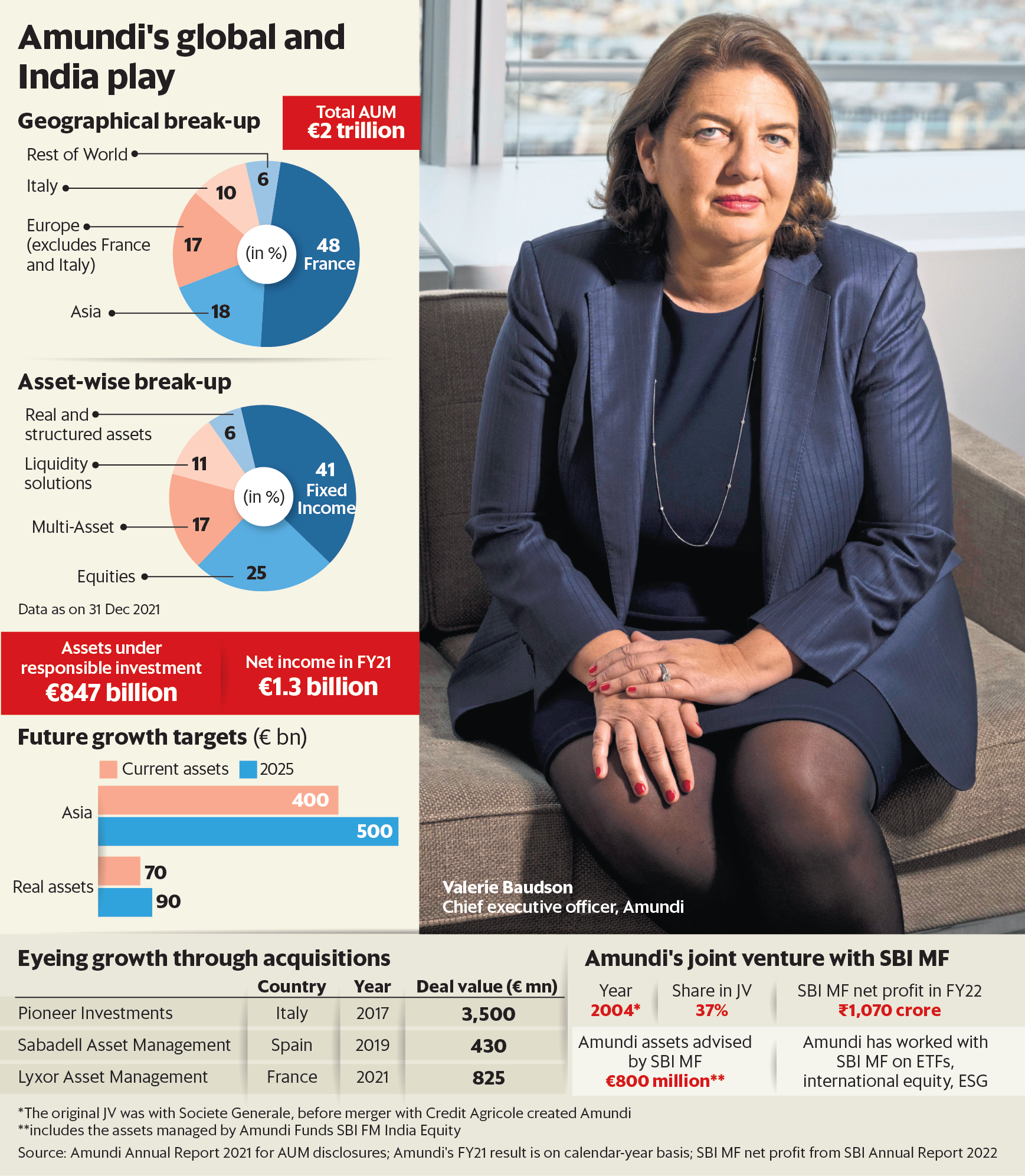
View Full Image
What do you look for when considering acquisition targets?
We are distributing more than 65% of our reserves, which will represent roughly €3 billion by 2025. We will have €2 billion to deploy in potential external growth, acquisitions between now and 2025. We will look at any potential acquisition as long as they align with our overall strategy and as long as it is in Europe or Asia, because these are the two main geographies for us. The other criteria for us is that it should give us a return of 10% at least—this is a financial guideline we give to the market and we are very disciplined about that. An acquisition can bring a lot of value as long as it is executed properly. So, this is the fourth part of our strategy. It is finally dependent on the market as we always need a buyer and seller.
How important is the SBI MF joint venture for the Amundi group?
SBI MF is important to us not so much because of its strong profitability, but because of its incredible growth potential—it represents the Indian growth engine for the next decade. The growth that we will see in SBI MF in 2022 should be higher than the average growth in the rest of the world. And this is for several reasons. First, because SBI MF is a very well-managed company. Second, the world average for asset management industry is 50% of GDP (gross domestic product). In India, it is just 15%. So that shows the growth potential of asset management industry in India for the next 10-20 years.
When we look at the world today, with the energy crisis, the geopolitical uncertainties, the inflation that we see everywhere, we know that we will see a short recession in Europe as well as in the US. We know the uncertainties we have in China today. So, when we look at the world map today, India is the country where the growth will be 6%, which will probably be one of the best in the world. India is the fifth-largest economy in the world today. So, India represents a fantastic potential. India’s population is reaching 1.4 billion, middle-class is growing, etc. . It is not so much of what it represents today, even though it is significant and growing, it is what it will be tomorrow which is important for us.
As of today, half of our assets under management in Asia are in India and we have a target to reach €500 billion in Asia by 2025. We should be able to easily achieve this target, thanks to India’s growth potential.
What role have you played in the joint venture with SBI MF?
On Amundi’s side, first we brought our expertise in asset management and risk management. We grew the capacity to launch an ETF (exchange traded fund). SBI MF is today the leader in ETF in India. SBI MF has always had a very clear and strategic vision of the industry it is in.
The ETF market was at a nascent stage in India at that time. They called us and asked us to explain how it works. This was back in 2015-2016. We explained to them about the ETF business, how it works in the US and Europe, the kind of teams you have to build, the type of relationship needed with the stock exchange, the consequences in terms of regulation, how to manage risks, and what kind of portfolio manager it needs to have. So, it was a strong acceleration of know-how in a simple and fluid way. Then, SBI MF found its own way—it is not exactly the same way in India as in the US or in Europe. The market dynamics are different, the regulations are different.
It is the same with ESG. When SBI MF wanted to launch its ESG fund, its teams came to Paris to meet our ESG team. We have more than 60 professionals dedicated to the ESG-related functions, in terms of getting the database, integrating it in our asset management practice, etc. But the only reason why it works is because of the power of SBI in India. I think what we want to bring is the capacity to accelerate development and the capacity to help grow faster, but the power of SBI is obviously the main factor.
Another thing we are bringing to the table is our international expertise. Indian retail and institutional clients are investing mostly only in India, which is more than normal. So, here, too, we have a role to play. We have played a part in the launch of SBI International Access—US Equity FoF. We have 500 people in Boston working on US equities, bonds, multi-asset strategies, etc.
How has the SBI MF partnership helped Amundi?
When we sell Indian equities or Indian bonds to our clients anywhere in the world, it is advised by SBI MF because we have a strong asset manager here with deep knowledge of the Indian market and Indian companies.
Indian expertise today is under-invested in the world. For bonds, there is a technical reason. It is because Indian bonds are not included in global indices as of now. This is unfortunately more complicated because asset managers are always benchmarking themselves against an index, so when the bonds are not in an index, it is a big limitation. But , Indian equities are in the indices and I am sure that in the next three years, considering the global economic situation and how the potential of Indian markets compares to other parts of the world, there will be a sharp increase of investment in Indian equities.
What is the share of your assets in India advised or managed by SBI MF?
We run a dedicated Indian equities fund, which has more than €400 million in assets under management (AUM). Apart from this fund, close to €400 million of Amundi AUM, held in various funds, is advised by SBI MF.
Which asset class has driven growth the most for you in the past five years and where do you see most growth in the coming years?
If I exclude passives, what mostly drove growth over the past five years was multi-assets and equities, but it was also real estate in the alternative world.
In France, we have a fund that invests 50% in the physical real estate like buildings and 50% in financial instruments linked to real estate such as Reits (real estate investment trusts), or money market, bonds, etc. It is a very powerful tool for retail clients because it allows them to buy real estate and be liquid at the same time. You can get in and out all the time, which is always an issue for retail clients when they cannot have their liquid assets.
For the next five years, we expect bond investments to grow, considering the global situation, the level of rates, so there will be a return of bonds. I think that multi-assets will remain an important part of our growth over the next five years, because it is a way for retail clients to start taking risks without taking too much. Honestly, it’s the best way to provide a good advice to clients, through discretionary portfolio management or advisory.
And there is a trend which is clear for the decade: an increase in real asset investments, especially by retail investors. When I say real assets, I am talking about real estate, but also private equity, private debt. There is a trend of retailization of these assets, which can be very useful in retirement plans, when you are investing for a very long time. It is a way to get returns in a clever way.
So, there will be a trend in this area, as retail investors look to protect themselves against inflation. Inflation is very much under control in India, but it’s an issue everywhere else in the world. I am also convinced that, as responsible investments, ESG will see fast growth across the world.
What is the mix globally between active and passive and the growth you see for active versus passive?
It is complicated to answer this question from a global perspective because the markets are so different. Roughly speaking, passive would probably grow twice as fast as active, but I am still absolutely certain we need active. Lot of our clients require active. Only way to do a proper asset allocation is by doing active asset management. That is why I still strongly believe in active.
At Amundi, if I exclude the big institutional mandates, I would say the split is still 80:20, in favour of the actives. It is a lot because of multi-assets. Multi-assets cannot be passive. By definition, multi-assets require an asset allocation process.
In equities, our split should be 50:50, taking open-end funds into account.
So, even globally passives are driven by institutional investors and not retail?
Yes, globally as well, passives are more driven by institutional investors than retail right now.
Do you also run quantitative funds at Amundi?
At Amundi, we do have a quantitative team, both for equity and multi-asset portfolios. We call it the Smart Beta Team or Equity Competitive Team. The idea is to work with several quantitative models but the main idea is to diversify the risk as much as possible.
What is the split of your responsible investment assets (ESG, €800 billion) between active and passive funds?
It is roughly half. About €400 billion is in these open active-ended funds. And the other half is in two things mostly. The first one is the passive management on which we have large number of ETFs or index funds, where we choose ESG Index. So, we are tracking ESG indices. And the second part is very large mandates from institutional clients, where we are either applying our own ESG rules or rules that our clients are asking us to apply, if they have specific demands regarding environment or social governance topics.
This will be an important part of Amundi’s growth. This is very important in Europe and gaining more importance in Asia. When I look at the flows in Asia; close to 25% of the flows are directed towards ESG as responsible investing today. We are proud to be part of that.
Why are Article 9 funds—funds targeting sustainable investments—seeing downgrade risk in Europe?
The regulation in Europe is evolving at a fast pace, which is very good but a bit complicated to follow for the industry. But, let’s focus on the positive side. Europe has always wanted to have a strong leadership in the ESG space. The regulators want to make sure that money invested is driven as much as possible towards responsible investment, which can accelerate the transition. So, the regulators are putting some guidelines in place and the industry will have to comply with that. We will also have to re-align the portfolio of our funds to comply with the new Article 9 standards.
Download The Mint News App to get Daily Market Updates.



